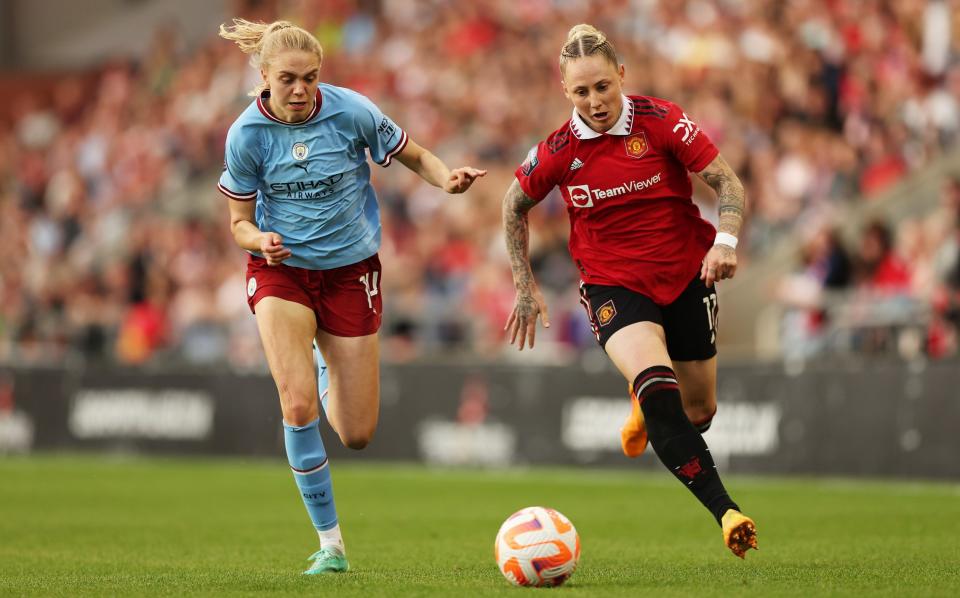
The amount spent by Premier League clubs on agents’ fees has risen to such an eye-watering level that it now exceeds – in just one season – their combined investment in women’s football.
Data collated by Telegraph Sport shows that the “Big Six” spent more on agents’ fees in men’s football last season alone than they have collectively spent on their women’s football programs since the Women’s Super League was founded in 2011.
Arsenal, Chelsea, Liverpool, Manchester City, Manchester United and Tottenham Hotspur paid £186 million to agents last year, compared to a combined total of £33 million on running their women’s football teams in the year to July 2022, their published financial accounts show .
They are investing more than ever in the women’s game, but those same clubs have declared a combined spend of £123.6 million on their women’s teams since the start of the WSL.
What makes that comparison more striking is that the Big Six include clubs who have invested the most in women’s football since the WSL was founded: Arsenal and Chelsea, and more recently both Manchester clubs.
Across the entire men’s top tier, the gulf is even more stark. According to figures released by the Football Association, the 20 men’s Premier League clubs spent £318,219,426 on agents from Feb 1, 2022 to Jan 31, 2023.
As almost half of those clubs do not run full-time, professional women’s teams, most do not publish a full breakdown of their annual expenditure on the women’s game within their financial accounts.
For example, even Aston Villa, sitting fifth in the WSL and known to be investing more than most in women’s football, have not had to publish their annual spending for last season because they received an audit exemption on the basis that they are a subsidiary of their parent company. The same has applied to another full-time WSL club, West Ham United.
Some of these clubs do invest more to help grow the women’s and girls’ games than their accounts suggest. Many run excellent community sessions and, even at the elite level of the WSL, many will share resources – medical and marketing teams, for example – that may be factored into the financial accounts of their men’s club.
However, the real matter at hand is not a battle of who spends more on women’s football but rather to put into context the sheer scale of spending at the top of the men’s game.
Next time a top-flight women’s fixture has to be abandoned after seven minutes because the players are sliding around on an icy, frozen playing surface – as happened with Chelsea vs Liverpool this season – and a debate ensues about the comparatively modest costs of installing underground heating, remember how much the football industry pays to agents.
When yet another woman is ruled out with a season-ending knee injury, imagine how extra research into the causes of those ruptures in women could be funded by £318 million a year.
And whenever organizations are defending how much money they have – or, rather, have not – invested in dementia research among footballers, or when another much-loved community club folds, or the England deaf women’s team find themselves needing to crowdfund to play at their World Cup, be mindful of what the richest clubs pay agents.
When it comes to agents specifically, changes are coming soon. From October, a Fifa-imposed cap on agents’ fees will be enforced, limited to three percent commission on a player’s salary and a maximum of 10 percent of a transfer fee if an agent is representing the selling club.
Yet it is not only about agents’ fees. Premier League clubs spent a record £800 million on transfers in the January window, and there are players earning weekly salaries higher than the combined annual wage bill of a Women’s Championship team.
Those top players are fully entitled to be paid their market rate, but the sheer scale of spending at the top of the men’s game makes suggestions that there is not enough money to fund women’s sport laughable.
Broaden your horizons with award-winning British journalism. Try The Telegraph free for 1 month, then enjoy 1 year for just $9 with our US-exclusive offer.